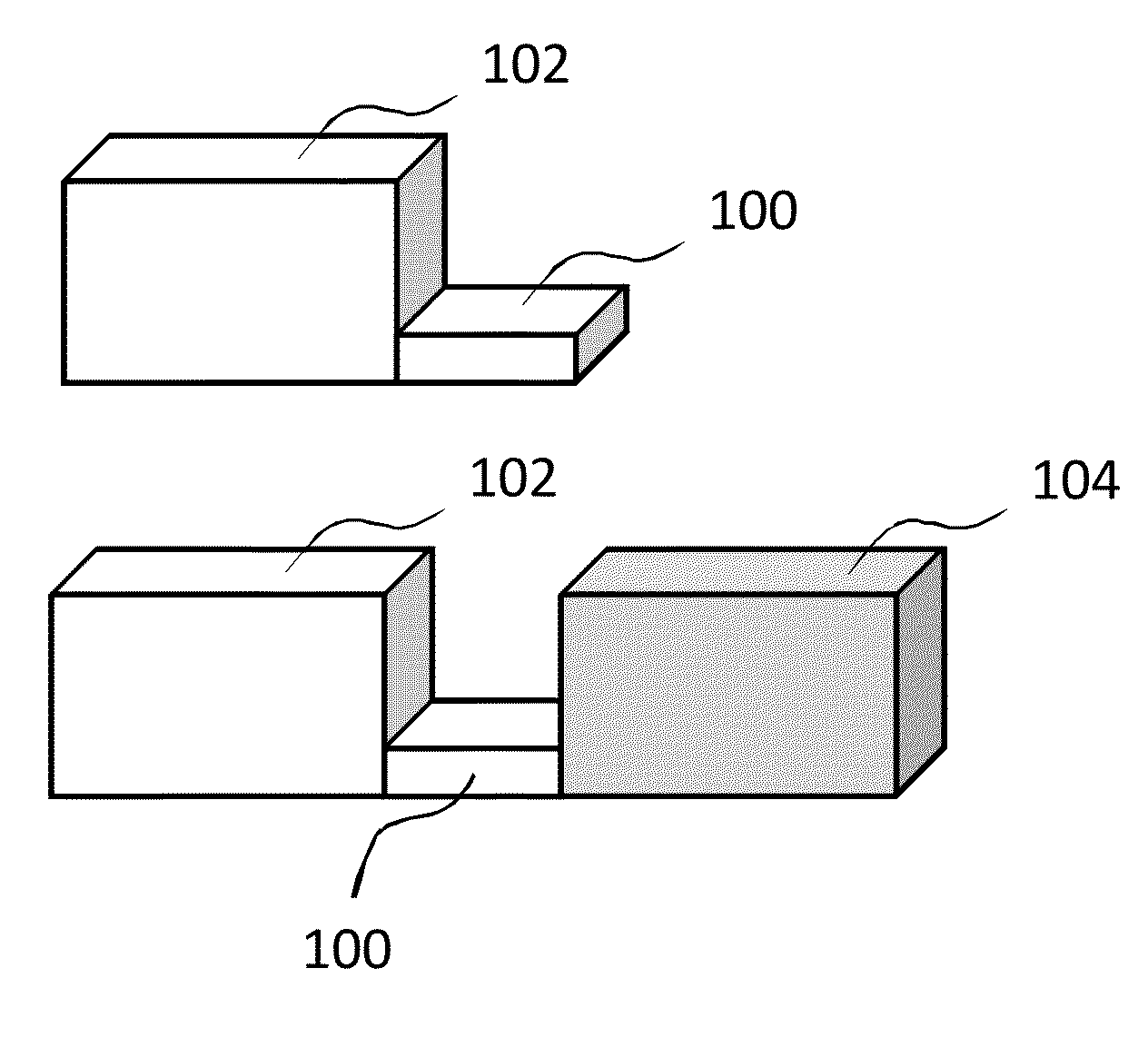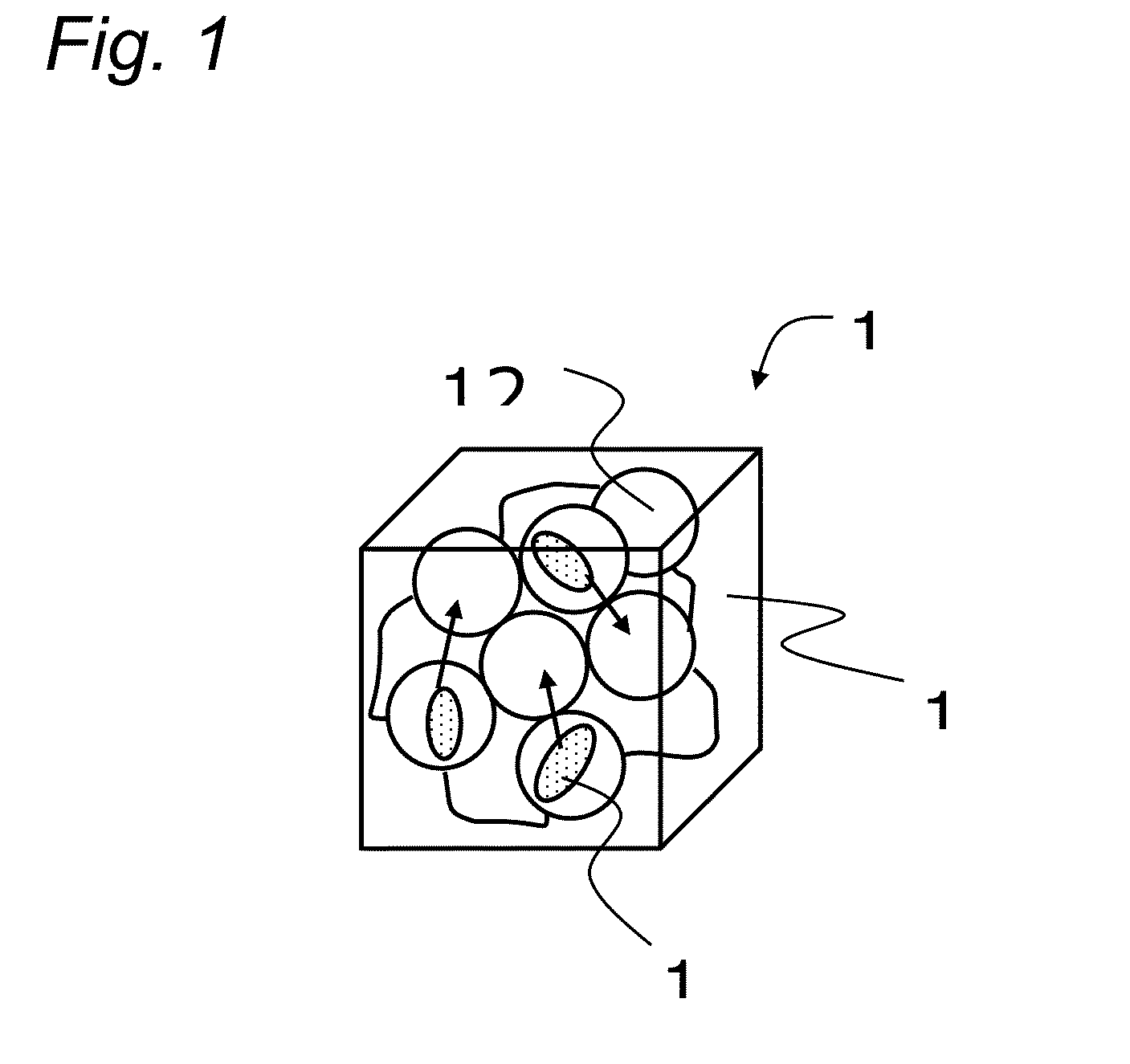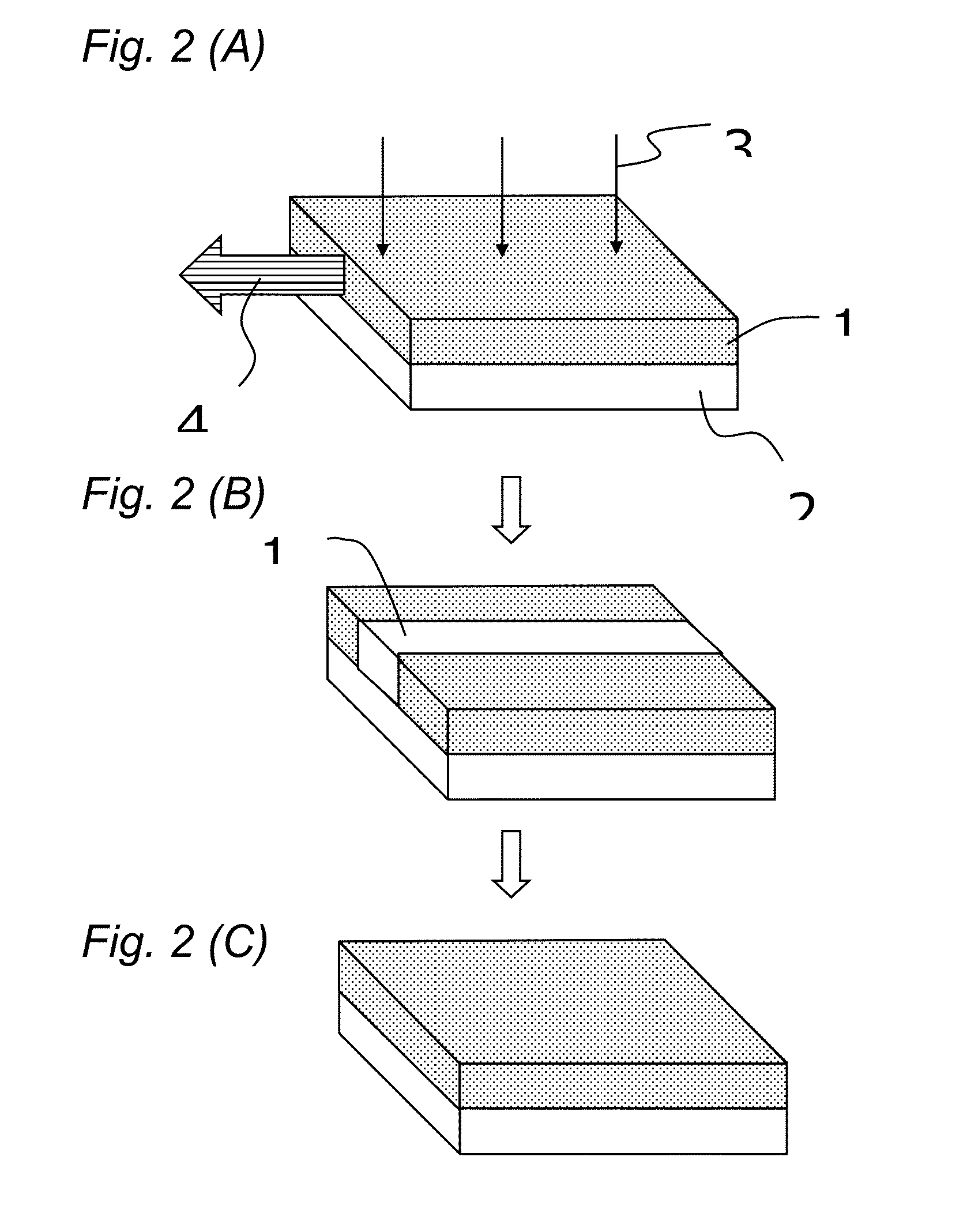Solid-state dye laser medium and process for production thereof
a dye laser and solid-state technology, applied in the direction of active medium materials, manufacturing tools, coatings, etc., can solve the problems of short service life of conventional solid-state dye lasers and unsuitable for long-term use such as environmental sensing or optical communication, and achieve excellent durability
- Summary
- Abstract
- Description
- Claims
- Application Information
AI Technical Summary
Benefits of technology
Problems solved by technology
Method used
Image
Examples
example 1
Production of Solid-State Dye Laser Using Toluene
[0104]Pyrromethene 597 (PM597, produced by Exciton) as a dye was dissolved in toluene to prepare a solution of a saturated concentration (100 to 130 mmol / L). This dye solution was mixed at a mixing ratio of 40:1 (volume ratio) with a dimethylsiloxane oligomer (SIM-360, produced by Shin-Etsu Chemical Co., Ltd.) being a polydimethylsiloxane precursor, and the mixture was stirred for 2 days for thorough uniform dispersing. Then, the dispersion was further heated at 72° C. to evaporate toluene, thus adjusting the system to a final dye concentration of 3 mmol / L.
[0105]After removal of toluene, 1 part by volume of a solidification agent (CAT-360, produced by Shin-Etsu Chemical Co., Ltd.) was mixed with 10 parts by volume of the above mixed solution.
[0106]A 2 cm×2 cm mold was placed on a glass substrate, and the above composition was cast into a hollow part of the mold to form a coating film. The coating film was heated at 72° C. for solidifi...
example 2
[0114]A DFB laser was produced in the same manner as in Example 1, except that a silicone oil (KF-1065, produced by Shin-Etsu Chemical Co., Ltd.) was used instead of toluene, and that the step of removing toluene was not performed.
[0115]When laser oscillation was performed in the same manner as in Example 1, single mode oscillation at a wavelength of 583.9 nm was observed. The spectral width was 0.19 nm. In the present Example, the first recovery cycle was followed by a second excitation cycle, a second recovery cycle, and a third excitation cycle. The results are shown in FIGS. 5 and 6. FIG. 5 shows photographs of the DFB laser obtained in the present Example after the first excitation cycle and after the first recovery cycle (after the laser was allowed to stand for 12 hours). FIG. 5 reveals that a decolorized portion observed after the first excitation cycle disappeared after the first recovery cycle, clearly showing the occurrence of dye circulation.
[0116]FIG. 6 shows that in th...
example 3
[0121]A solid-state dye laser medium was produced in the same manner as in Example 1, except that SIM-260 (produced by Shin-Etsu Chemical Co., Ltd.) was used as the dimethylsiloxane oligomer, CAT-260 (produced by Shin-Etsu Chemical Co., Ltd) was used as the solidification agent, and the solidification took a time of 3 days at 72° C. Evaluation of a laser using the laser medium confirmed that laser oscillation was obtained.
PUM
| Property | Measurement | Unit |
|---|---|---|
| dielectric constant | aaaaa | aaaaa |
| temperature | aaaaa | aaaaa |
| temperature | aaaaa | aaaaa |
Abstract
Description
Claims
Application Information
 Login to View More
Login to View More - R&D
- Intellectual Property
- Life Sciences
- Materials
- Tech Scout
- Unparalleled Data Quality
- Higher Quality Content
- 60% Fewer Hallucinations
Browse by: Latest US Patents, China's latest patents, Technical Efficacy Thesaurus, Application Domain, Technology Topic, Popular Technical Reports.
© 2025 PatSnap. All rights reserved.Legal|Privacy policy|Modern Slavery Act Transparency Statement|Sitemap|About US| Contact US: help@patsnap.com



